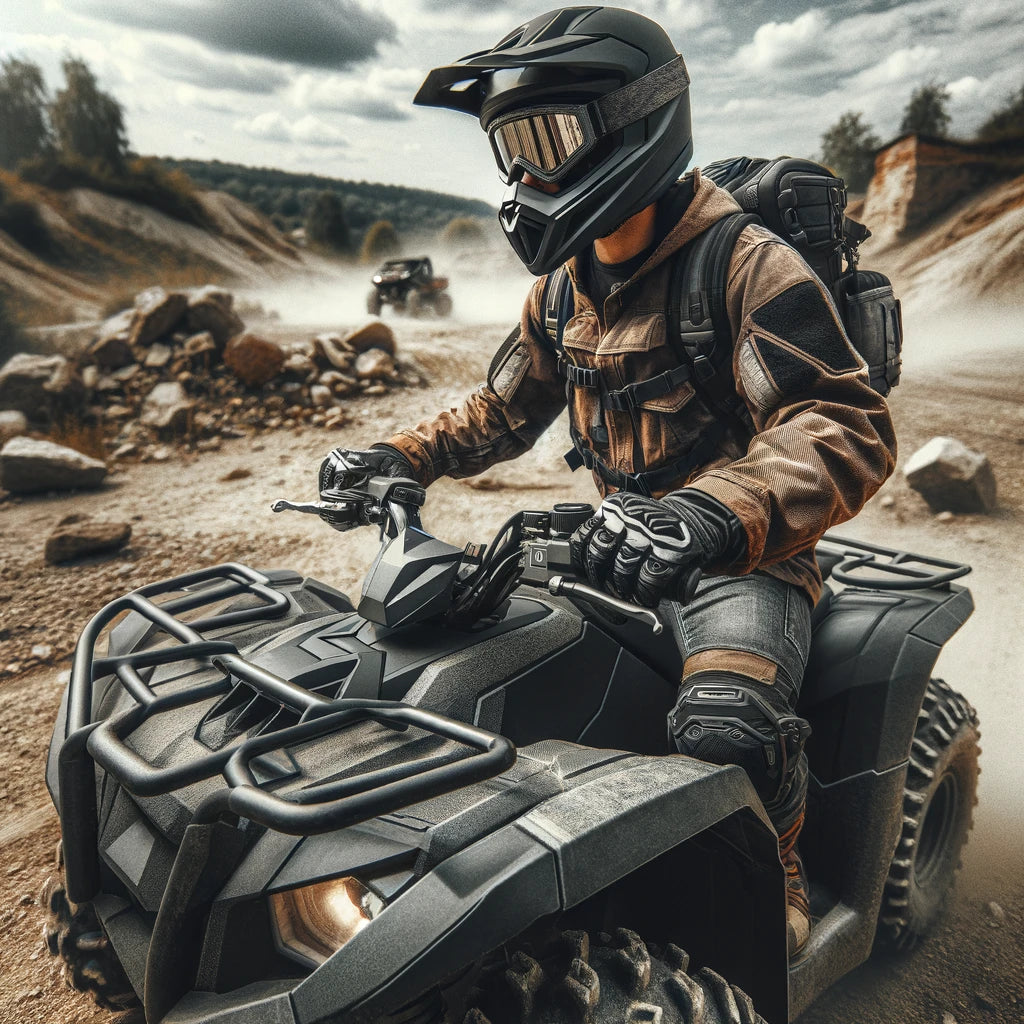All-terrain vehicles (ATVs) offer an exhilarating way to explore the outdoors, giving riders access to rugged terrain and thrilling adventures. Whether you're a seasoned rider or a newcomer, it's easy to get caught up in the excitement and forget about the crucial element that should always come first: safety.
Here are a few reasons why practicing safety while riding an ATV is non-negotiable.
1. High Risk of Accidents
ATVs are powerful machines designed for off-road use, and while they are fun to ride, they also come with a high risk of accidents. ATVs can easily tip or roll over, particularly on uneven or steep terrain. According to the Consumer Product Safety Commission (CPSC), thousands of ATV-related injuries occur every year, many of which could have been prevented with proper safety precautions.
2. Injuries Can Be Severe
Unlike cars, ATVs offer little protection to riders in the event of a crash. Without a protective frame or seatbelts, ATV riders are more vulnerable to injuries, which often include broken bones, head trauma, and even spinal cord injuries. Wearing a helmet, goggles, gloves, and other protective gear can dramatically reduce the severity of injuries in case of an accident.
3. Youth Riders are Particularly Vulnerable
Many ATV riders are young, with children and teens being especially enthusiastic about riding. However, they are also more susceptible to accidents due to their lack of experience and ability to handle the vehicle. Age-appropriate ATVs and rider training can help mitigate this risk, ensuring younger riders understand the importance of responsible riding and how to manage the machine safely.
4. Environmental Hazards
ATV riding often takes place in unpredictable environments such as trails, mountains, and forests. These locations are filled with natural hazards like rocks, ditches, trees, and loose soil. Being aware of your surroundings and adhering to proper riding techniques, like slowing down in unfamiliar areas and avoiding dangerous terrains, is critical to avoiding accidents.
5. Mechanical Failures
Like any vehicle, ATVs require regular maintenance to ensure they function properly. Neglecting maintenance can lead to mechanical failures like brake malfunctions, tire blowouts, or steering problems—each of which can result in catastrophic accidents. Checking your ATV before every ride ensures that it’s in safe working condition, preventing avoidable mechanical issues.
6. Riding With Others
Many ATV accidents happen when riding in groups. Riding too closely to other ATVs, reckless driving, or not communicating clearly can lead to crashes. It's important to maintain a safe distance and use hand signals or radios to communicate with fellow riders, especially when you're on challenging trails.
Essential Safety Tips for ATV Riders:
- Wear Protective Gear: Always wear a DOT-compliant helmet, goggles, gloves, and long sleeves to protect yourself in case of falls or accidents.
- Take a Safety Course: Whether you're a beginner or experienced rider, ATV safety courses are invaluable in teaching the proper techniques and safety precautions needed for safe riding.
- Ride an ATV Suitable for Your Size and Skill Level: Make sure the ATV you ride is appropriate for your age and experience level, especially for younger riders.
- Avoid Paved Roads: ATVs are designed for off-road use and are much harder to control on paved surfaces, increasing the risk of collisions.
- Don’t Ride Under the Influence: Operating an ATV while intoxicated or impaired increases your chances of a crash.
- Stay Aware of Your Surroundings: Always be mindful of environmental hazards and changes in terrain that could affect your control over the ATV.
Conclusion
While ATV riding can be an exciting and fun-filled activity, safety must always come first. Prioritizing proper training, wearing protective gear, and being mindful of your surroundings can prevent accidents and ensure that your time on the trails is both enjoyable and safe. Remember, no thrill is worth risking your life or health. Stay safe, and happy riding.

